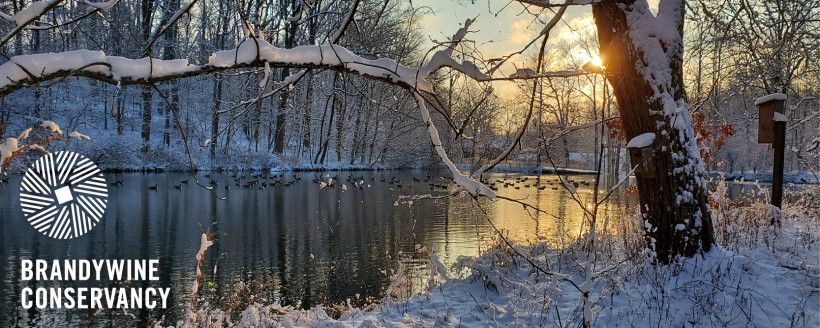
Directors' Report
Dear Fellow Conservationists,
Welcome to the winter edition of Environmental Currents!
As another year comes to a close, "thankfulness” is the overarching emotion from all of us here at the Brandywine. Your support, especially as we continued to push forward with recovery efforts stemming from last year’s historic flooding event, has been instrumental to our staff. As our work progressed this fall, we found ourselves once again grateful for volunteers, many of whose stories are featured in this edition. We recently completed projects with numerous residents volunteering to serve on planning task forces to help guide the future of their municipalities in Highland Township and Malvern Borough, which included helping the Conservancy incorporate climate resiliency planning into comprehensive plans for the first time. Similarly, residents of three Townships joined together with the Conservancy to develop a plan to conserve the Bennett’s Run Watershed. Notably many of these volunteers donated not only their time but also financially—thank you! Further thanks are extended to the Honey Brook farmer who volunteered to install his own livestock fencing to ensure we could afford to plant his 4.5-acre buffer when inflation caused our costs to soar.
As a way of showing our appreciation, many of the articles in this issue feature no cost opportunities for you to engage in our natural world: exploring the iNaturalist smartphone application, enrolling in a free herpetological survey on your property, or expanding your enjoyment of a visit to the Brandywine Museum of Art by visiting our recently launched Brandywine Outside website. Brandywine Outside is a new digital resource to enhance your outdoor experience while navigating the natural beauty, wildlife and scenic vistas that our 15-acre campus and trails have to offer.
If you are able to visit us through January 8, you will have the opportunity to celebrate the 50th anniversary of the Brandywine Railroad, which includes new display elements—including a few Conservancy-related “Easter eggs” to discover. The Museum also has a special exhibition called Fragile Earth: The Naturalist Impulse in Contemporary Art, which sparks a very timely reflection on the world’s ecosystem, while also immersing visitors in the beauty of our natural world. It's a truly thought-provoking display that combines the art and environment mission of the Brandywine.
We are so thankful that we can be here for you, and we are grateful for your continued support as we forge ahead preserving more precious places, creating more ways for you to enjoy the great outdoors, and helping you plan a more resilient future.
Finally, a huge thank you to the residents of Westtown Township for voting to save Crebilly Farm, a keystone moment for this beloved and ecologically important historic resource. The Conservancy was pleased to be able to help our colleagues at Natural Lands in this endeavor.
From all of us at the Brandywine Conservancy, we wish you happy and safe holidays!
— Stephanie and Grant
Stephanie Armpriester & Grant DeCosta
Co-Directors, Brandywine Conservancy
Partners in Preservation: West Bradford Township
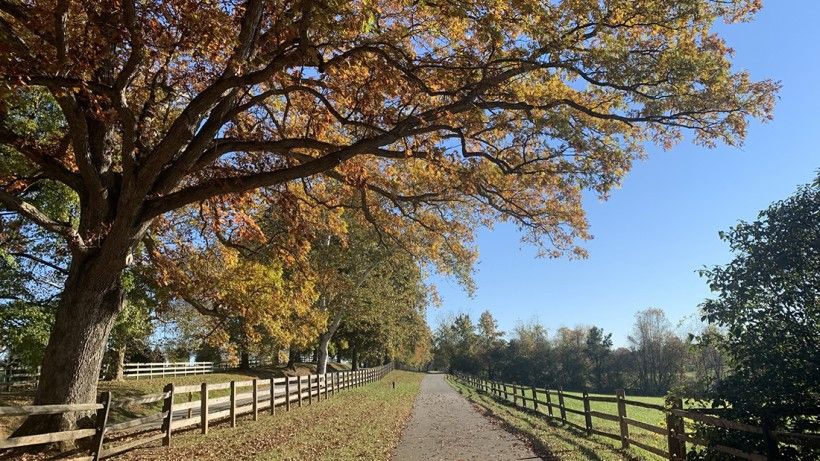
For over 40 years, the Brandywine Conservancy has been working with landowners and officials in West Bradford Township to help preserve land and protect key resources. Located between the East and West branches of the Brandywine Creek in Chester County, PA, the Township is rich in natural, agricultural, historical and cultural resources, including important wildlife habitat which supports critical species. In partnership with the Conservancy, Township Supervisors have made great strides over the years to manage activities that may adversely affect the existing environmental integrity of the land. Among other accomplishments, West Bradford’s successful history of proactive planning has led to land acquisitions for open space that serves the public’s need for both passive and active recreation, while also maintaining the Township’s ecological value, rural character and sense of place.
In recent years, the Conservancy has developed several new direct and indirect preservation tools that have been used to assist the Township in their objectives to integrate publicly accessible trails and recreational sites—when appropriate—with preserved acreage that is critical for agriculture and the protection of natural resources, as well as safeguarding floodplains to mitigate the potential effects of climate change. The Conservancy’s comprehensive approach utilizes the combined expertise of the organization’s Land Conservation and Municipal Assistance Program staff and provides education and guidance to residents and elected officials.
A Conservation-Minded Community

In the fall of 2017, the Conservancy assisted West Bradford with implementation of an open space referendum, which—after overwhelming support from residents—created a dedicated earned income tax to be used for preserving land within the Township. The proceeds from this small tax created a fund that will allow the Township to increase its efforts in preserving the rural character, historic culture and environmental integrity of the area—all critical components to maintaining the quality of life in the Township. The Conservancy assisted their Land Preservation and Sustainability Committee to provide recommendations on how to best allocate the funds for future land preservation.
The Conservancy’s Land Conservation staff has worked with West Bradford to use the open space fund for purchase of conservation easements on properties identified by the Township as high priority for preservation. In these projects the Township has adopted innovative and flexible approaches to funding. It has maximized its open space resources by leveraging its own funds with county and state funding. It has also initiated a program to purchase properties, place easements on them, and sell to private owners—using any profits to further preservation efforts.
Brandywine has also worked with West Bradford landowners who want to donate an easement rather than sell it (tax benefits may be available for such a donation). An easement can be granted during the owner’s lifetime, or after death. In several recent instances, the Conservancy has acquired easements in West Bradford that were conveyed by representatives of the landowner’s estate, ensuring that the owners’ vision for the future of their land was fulfilled.
Other land trusts have acquired easements in the Township, and West Bradford itself has conserved land as parks and preserves. All together, these multi-pronged conservation efforts have contributed to an amazing achievement: almost 30% of the Township’s land has been preserved to date.
This preserved land has created extensive greenways along the West Branch of Brandywine Creek and several of its tributaries. Connecting conserved land protects the waterways from flood damage and pollution, and creates corridors of habitat for wildlife—enabling them to more easily obtain food and shelter, as well as establishing migration paths that permit adaptation to climate change.
One of those West Branch tributaries is the Broad Run, which drains the western third of the Township. It is designated an “Exceptional Value” stream by the state of Pennsylvania, because of its high water quality and wildlife habitat. The Conservancy has been working with West Bradford since 2019 to target the Broad Run watershed as a priority for outreach to encourage both conservation and land stewardship to protect its EV status. The effort has been aided by a grant fund created by a private donor to assist with easement acquisition costs and technical assistance for stewardship. The initiative continues to bear fruit: In autumn 2022 the Conservancy was granted easements on two properties in the watershed, totaling nearly 75 acres, which were acquired with Township open space funds. These new easements protect the Township’s scenic, historic, agricultural and natural resources and as a bonus, one includes public trail easement which will connect to the Township’s trail system.
Planning for Future Growth
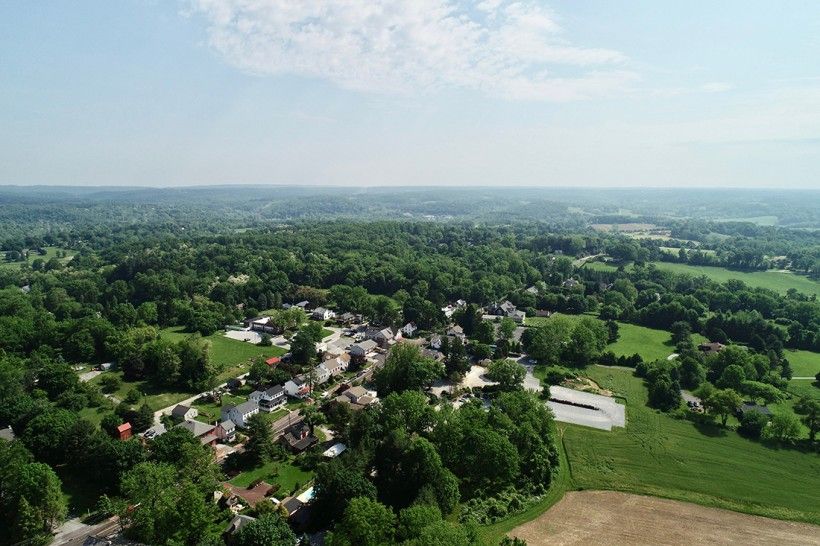
As the Township looks toward the years ahead, balancing the needs of residential growth with open space preservation will remain a key focus. To assist with ongoing planning efforts, the Conservancy’s Municipal Assistance Program provided mapping assistance to Tom Comitta Associates in their update to the Township’s 2020 Comprehensive Plan Update. This document is the foundation for zoning and growth in West Bradford Township through the year 2030. Since the adoption of this document, the Conservancy has continued to work with the Township to review, revise and draft amendments to zoning ordinances that are consistent with the plan. This holistic guidance is allowing the Township to have a complementary approach to preservation and growth.
Additionally, the Conservancy completed the Township’s Open Space, Recreation and Environmental Resources Plan Update (OSRER) in the fall of 2022, which identifies key opportunities for future open space preservation; recognizes the current and potential future demands for recreational parks and facilities; and provides a vision for a bicycle and pedestrian transportation network that connects residents to parks, schools, cultural amenities and local businesses. In essence, the OSRER helps guide the integration of future land use decisions with the needs of its community members.
A Model for Success
The successes seen in West Bradford Township are a prime example of where the Conservancy’s long-term relationship with the municipality, paired with its cross-program approach of municipal planning, land conservation and stewardship, have paid dividends beyond the sum of their parts, and can serve as a model for other communities in the region.
“The Township could not be more pleased with the progress we have made through the work of our Board of Supervisors, Land Preservation Committee, and our partners at the Brandywine Conservancy,” said Township Manager Justin Yaich. “We look forward to continuing these important relationships to advance our preservation goals.”
Planning for Climate Change: Malvern Borough and Highland Township Comprehensive Plan Updates
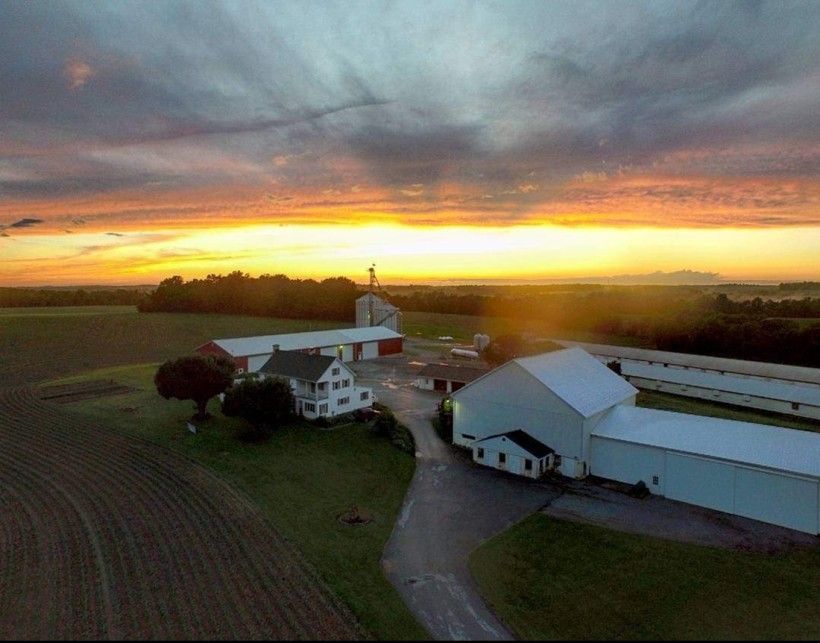
Municipalities in southeastern Pennsylvania are increasingly seeing and experiencing the impacts of climate change on their communities in the form of more intense severe storms and episodes of extreme heat. Such events can cause rapid, dangerous and destructive floods; create stress on critical infrastructure; and pose serious health concerns to vulnerable populations. Our changing climate can also impact the health of our natural systems as they are unable to quickly adapt to the impacts brought on by climate change.
Recognizing the need to address climate change and its impacts at a local level, the Brandywine Conservancy’s Municipal Assistance Program has started introducing the topic of climate resiliency into Municipal Comprehensive Plans. In two recently adopted Comprehensive Plan Updates for Malvern Borough and Highland Township—two very different communities—Conservancy planners incorporated assessments and recommendations that aim to increase each community’s awareness of the impacts of climate change and their ability to adapt and react to its impacts.
For both plans, the Conservancy created a Community Climate Profile, which is used to provide a baseline of existing conditions, as well as projected future conditions to help communities better understand the current and potential future impacts of climate change on their community. The Profile provides a high-level overview of anticipated local climate conditions and impacts by highlighting projected changes in temperature and precipitation for the community, township-wide greenhouse gas emissions, and average air quality conditions. Since these two communities are vastly different—one urban and the other rural—recommendations in their Comprehensive Plans were tailored to match the needs and concerns of the specific community.
As an agricultural community, Highland Township’s character, economy, infrastructure and residents are directly impacted by variations in climate. Recognizing the importance of preserving this rural community, Highland Township has already taken steps towards building climate resiliency through its ongoing land preservation efforts, dedication to natural resource protection, and requirements for green design practices for new development. These steps not only protect Highland Township’s environmental and agricultural resources, but they also help alleviate flooding in communities downstream, increase regional resiliency and food security, and improve air and water pollution. In addition to highlighting the steps Highland Township has already taken, the Comprehensive Plan recommends evaluating areas of the Township that are susceptible to extreme weather events such as heat, drought, and/or precipitation through a vulnerability assessment. The Plan also recommends the implementation of cost and energy saving strategies in municipal operations and sharing climate-related successes with the local community via municipal communications.
As one of Chester County’s urban centers, Malvern Borough is a small, densely populated residential and commercial center situated just south of the Route 202 corridor in the central-east portion of the County. While recognized as a Borough, Malvern is unique in that its southern half still contains significant natural resources—a blessing when it comes to climate resiliency. The Borough is also unique in that it sits atop two watersheds, one designated as Exceptional Value (Little Valley Creek) and the other designated as High Quality (Crum Creek). As the headwaters for these two watersheds, Malvern Borough has a responsibility to its downstream neighbors to help preserve the waters of these important watersheds. Much like Highland Township, the Borough’s Comprehensive Plan recognized the importance that protecting its natural resources can play in adapting to climate change, but additional recommendations focused on seeking opportunities to improve the resiliency of the built environment by incorporating Green Stormwater Infrastructure (GSI); minimizing impervious surfaces; and ensuring a healthy and diverse tree canopy that can assist in alleviating the impacts of intense storms on critical infrastructure, lessen the heat island effect seen in urban areas, and help filter harmful pollutants from the air and stormwater. In addition, recommendations suggest evaluating public and private spaces that may offer residents refuge from extreme heat events, seeking opportunities within Borough operations to improve energy efficiency and decreasing the use of fossil fuels, and enacting a commitment to join the other Pennsylvania communities who have committed to 100% clean energy through the “Ready for 100” campaign.
The two communities of Highland Township and Malvern Borough are prime examples of debunking the age-old planner's phrase that “by failing to prepare, you are preparing to fail.” The impacts of climate change have real, potentially life-threatening consequences for our communities and how we live. By incorporating climate change adaptations into their respective Comprehensive Plan Updates, these two communities are better prepared to recognize and tackle these challenges over the next decade, helping to ensure a healthy and safe environment and community for future generations.
Invasive Species Spotlight: Winter Control Techniques for Christmas Berry
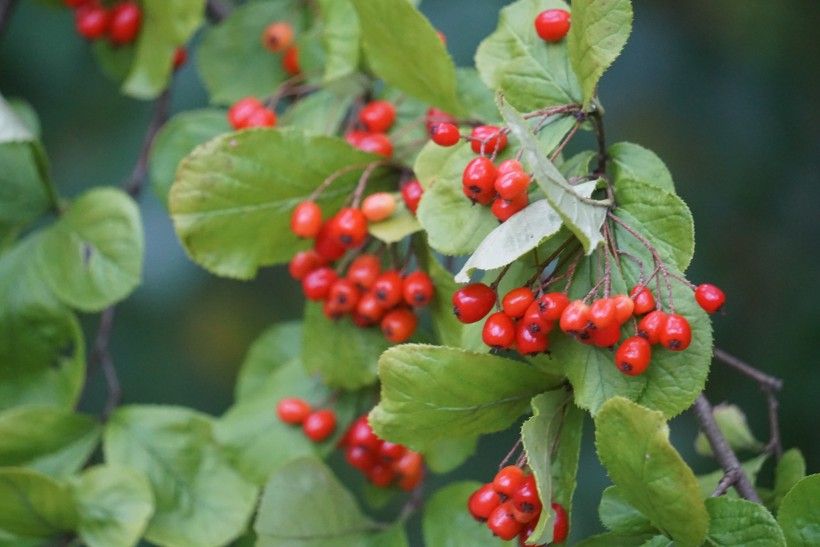
It may seem counterintuitive, but winter is an excellent time to manage invasive plants. The right techniques implemented during winter can be very effective at controlling any invasives on your property, particularly woody plants like the lesser-known Christmas Berry (Pourthiaea villosa). Learn more about how to identify and eradicate this plant in our latest invasive species spotlight below.
Click here to read more.
Wading through Wetlands in Search of Amphibians & Reptiles
Do you have a property in Pennsylvania with wetland habitat? If so, your backyard might be a great candidate for a herpetological study! In the article below, the Brandywine’s Easement Manager, Kristen Frentzel, takes us along a trip wading through wetlands of a conserved farm to aid local scientists in collecting data for the Pennsylvania Amphibian & Reptile Survey. Learn more about the importance of this study and how you can get involved, too!
Click here to read more.
Bennett’s Run Watershed Conservation Plan Completed

The Brandywine Conservancy recently completed the Bennett’s Run Watershed Conservation Plan with support from its partners, the Stroud Water Research Center and Brandywine Red Clay Alliance. The Bennett’s Run watershed is around 1,850 acres in size and located primarily in Pennsbury Township, although portions are also found in Kennett and East Marlborough Townships. Bennett’s Run empties into the main stem of Brandywine Creek just above Chadds Ford and the watershed is primarily characterized by larger single-family residential lot subdivisions, higher density retirement residential, and some agricultural lands. Bennett’s Run itself is designated as an attaining stream by the Pennsylvania Department of Environmental Protection (PADEP), which means that its water quality meets the standards required for its designated use as a warm water fishery. It is one of only a few attaining streams in south-central Chester County.
While attaining, like many streams in Chester County, Bennett’s Run has its share of management issues and threats, which could endanger its status as an attaining stream. The Bennett’s Run Watershed Conservation Plan was developed to help identify those threats and provide a wide range of recommendations that will help better understand them and manage to mitigate them into the future. The Plan was guided by a Steering Committee that included representatives from all three municipalities, local Homeowner Associations in the watershed, residents from Kendal-Crosslands Community, Pennsbury Land Trust, Chester County Conservation District, Chester County Water Resources Authority, and Longwood Gardens. The Plan is aligned with the goals of the County’s Comprehensive plan, Landscapes3, and the Chester County Water Resources Authority’s Comprehensive Plan, Watersheds.
Through Committee discussions and input from watershed residents via an online survey and public event, the Plan identified four key issues for the watershed: Water Resources Protection; Natural Areas Health and Management; Adapting to Climate Change, and Increasing Landowner Engagement, Education, and Stewardship. Within these four key issues, 44 strategies were developed to achieve 13 goals that promote a healthier, more resilient, and actively stewarded watershed.
The Bennett’s Run watershed is almost entirely under private ownership, which can create a challenge for plan implementation and large-scale, coordinated land management practices. Recognizing this potential obstacle to achieving its goals, the Plan encourages the active participation and partnership of key stakeholders, local non-profit institutions, and local and County government agencies in implementing projects on the ground, influencing municipal land use decisions and regulations, and educating watershed residents on actions they can take on their own properties to protect the watershed and its resources for future generations. To assist in this endeavor, the Plan provides a comprehensive suite of implementation resources that identifies organizations, web-based guides, and funding sources on a variety of land stewardship issues and management approaches, including riparian plantings, natural areas management, native and invasive plants, land conservation, green stormwater infrastructure, climate resiliency, and environmental education and outreach.
Since being approved by the Steering Committee this past summer, the Brandywine Conservancy has been actively seeking support and recognition of the Plan through the adoption of a resolution in support of its goals from the three watershed municipalities. Pennsbury Township adopted a Resolution in support of the Plan at their Board of Supervisors meeting on November 16, 2022, and East Marlborough adopted the same resolution at its Board meeting on December 5, 2022. Support of this kind from watershed municipalities can greatly enhance the competitiveness of stakeholders when seeking grant funds to implement the Plan’s goals and strategies over the coming 10-20 years.
The completed Bennett’s Run Watershed Conservation Plan can be viewed here.
Financial support for developing the plan was provided by the William Penn Foundation, Longwood Gardens, and residents of Kendall-Crosslands Community.
Planting Trees for Clean Water
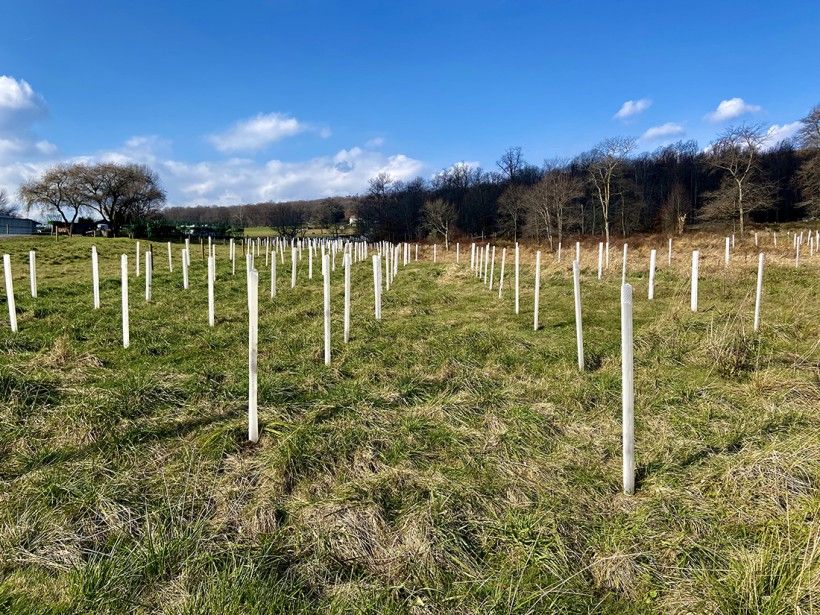
Protecting clean water starts at the source! Situated at the headwaters of the Brandywine Creek, Honey Brook Township is approximately 25 square miles, with a little over 6,000 inhabitants. Roughly 70% of the Township’s land use is in agriculture, and 80% of that farmland is either owned or operated by the Plain Sect community. In order to ensure cleaner water downstream, the Brandywine Conservancy has been working with Honey Book farm owners and local agricultural consultants for years to help them implement solutions that minimize runoff from entering the headwaters by protecting and retaining valuable soils.
A major line of defense in preventing runoff from entering our streams is the utilization of riparian buffers—areas of trees, shrubs and grasses that form buffer zones along the banks of rivers and streams. Since 2014, the Conservancy has worked to implement over 24 acres of buffers in Honey Brook, with more than 4,300 trees planted.
This fall, a buffer project was completed on a 96-acre farm in Honey Brook. An additional 1,200 trees were planted over a 4.5-acre, fenced-in buffer. Live stakes—which are cost-effective and have a high success rate—will also be incorporated into the buffer planting this winter. The landowner was directly involved in the implementation of this buffer by installing the streambank fence himself, along with family members, this past summer. Additionally, the Conservancy helped implement several other Best Management Practices (BMPs) on this property including a grassed waterway, a diversion rebuild, and a water and sediment control basin.
This work is part of the William Penn Foundation’s Delaware River Watershed Initiative (DRWI), a project which launched in 2013 with the intent of aligning over 50 leading nonprofit conservation organizations in a coordinated and collaborative effort to protect and restore water quality in the Delaware River basin. With this ongoing project, we will continue to protect valuable farmland and waterways all throughout Chester County.
Westtown Township Open Space Referendum

On Election Day this past November, two-thirds of residents in Westtown Township voted "yes" to save the historic and scenic Crebilly Farm by passing an Open Space Referendum—which approved a tax to fund open space preservation. This significant land preservation victory took months of preparation and a team of municipal staff, volunteers and local conservation organizations—including the Brandywine Conservancy—to provide residents with the resources needed to make an informed decision.
In preparation for this referendum, Natural Lands was hired by the township to help guide the preservation process and Brandywine Conservancy provided additional support by conducting a Cost of Community Services Study.
Developed specifically for Pennsylvania communities by Dr. Timothy W. Kelsey, Professor of Agricultural Economics at Penn State University, the Cost of Community Services study compares the long-term cost of residential development with the cost of other land uses, like farmland and open space—providing residents with the potential costs if the property was developed. When compared to the cost of preservation, the study found that residential development would cost taxpayers twice as much. This study played a vital role in providing residents with the financial rationale for preservation and revealed some of the hidden costs that residential development can bring to taxpayers.
Fragile Earth: The Naturalist Impulse in Contemporary Art

Art and nature collide in a special exhibition now on view at the Brandywine Museum of Art. Titled Fragile Earth: The Naturalist Impulse in Contemporary Art, this exhibition highlights the diverse approaches taken by four leading contemporary American artists—Jennifer Angus, Mark Dion, Courtney Mattison and James Prosek—whose work engages with environmental themes. “These artists were selected for the profound message their works convey about environmental conservation,” said Jennifer Stettler Parsons, the exhibition’s curator. "They transform natural and non-traditional materials, like insects and found debris, into art in order to make visible the human role in global climate change, and to reveal how our daily choices may endanger our planet’s future.”

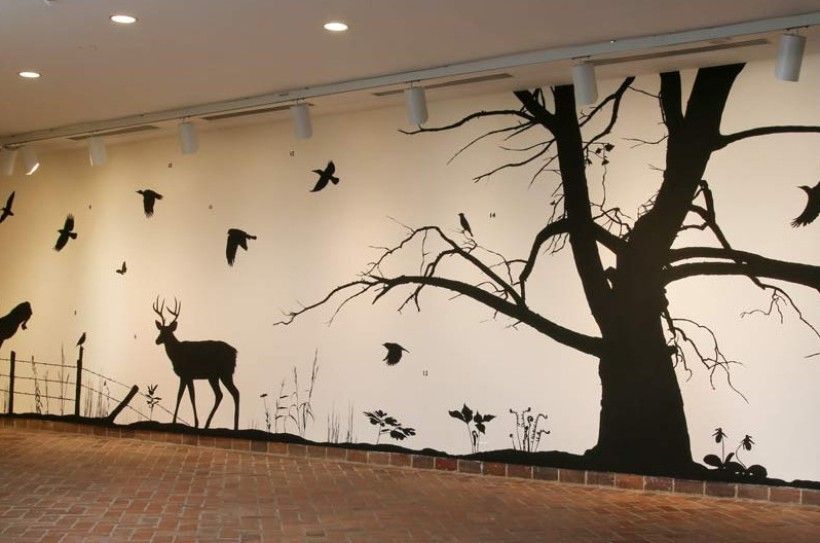
The Brandywine’s presentation of Fragile Earth includes a site-specific installation by Angus and a commissioned mural by Prosek that explores the plants and animals native to the Brandywine Valley. The exhibition spans two galleries of striking works reflecting on the vulnerability of the environment, created in a variety of media by the featured artists—from the monumental coral reef sculptures of Courtney Mattison to the surprising and beautiful insect art of Jennifer Angus.
Fragile Earth sparks a very timely conversation around stressors on the world’s ecosystem, while also immersing visitors in the beauty of our natural world. Given the Brandywine’s unique status within the United States as an organization that joins together an art museum and a land trust, Fragile Earth has particular resonance here. Viewed through the lens of this special exhibition, Brandywine’s staff recently held a virtual lecture, titled “Fragile/Resilent Earth,” that highlighted the innovative work being done locally by the Conservancy to promote resilience by protecting natural resources, including habitat and water. Featured speakers included Brandywine’s Senior Curator Amanda C. Burdan, Associate Planner Susan Charkes and Assistant Planner Lisa Timbers.
In case you missed it, you can view the presentation here.
On view through January 8, 2023, Fragile Earth is organized by the Florence Griswold Museum (FloGris), in Old Lyme, Connecticut, and curated by Jennifer Stettler Parsons, Ph.D. The Brandywine Museum of Art is the ultimate venue for this exhibition, which previously debuted at the FloGris in 2019. Working with Parsons and the four artists, Amanda Burdan, Senior Curator at Brandywine, updated the exhibition to incorporate works made by the artists in the interim. Over 40% of the works on view are new to this iteration of the exhibition.
Featured Conservation Spotlight
Another lovely view of protected open space! The Brandywine Conservancy recently preserved 14+ acres of horse pasture and woodlands from future development near the historic Village of Marshallton in West Bradford Township, Chester County.
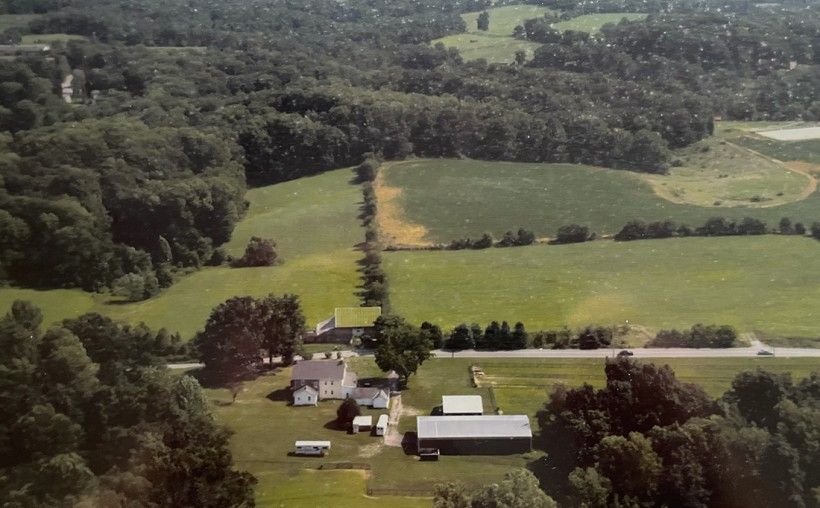
Adjacent to two other tracts of land protected by the Brandywine, this rural landscape was previously home to the late Edith (Edy) Albertson, who grew up in the historic farmhouse on the property—which was part of her family's dairy farm. The executor of Edy's Estate, Wendy Paulson, preserved the property to honor Edy's wishes that it not be developed.
This property is almost entirely within the watershed of Broad Run—designated as an "Exceptional Value" stream by the PA Department of Environmental Protection. Preserving land within this watershed helps protect and improve water quality. Both the Broad Run watershed and Marshallton rural landscape are identified as high preservation priorities to West Bradford Township, which provided funds for this conservation easement through its municipal Open Space Fund.
Featured Link
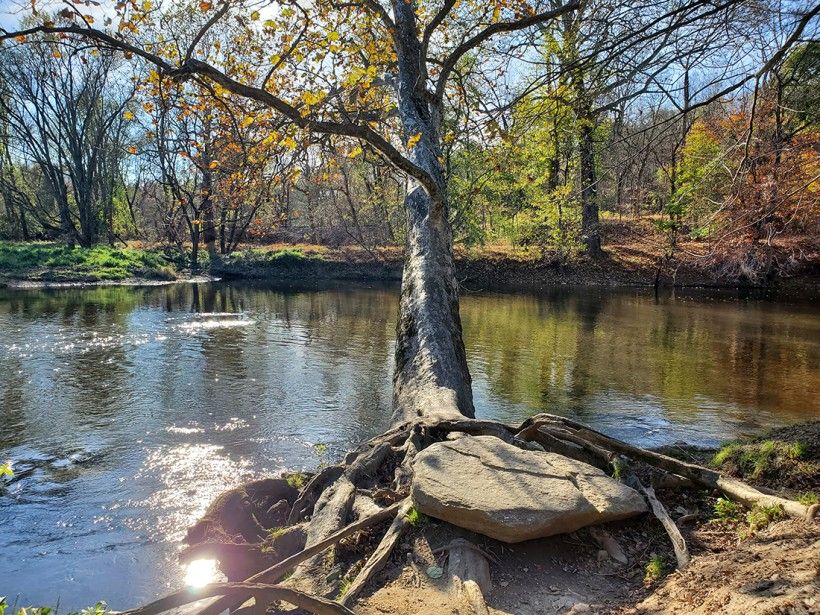
Check out “Brandywine Outside,” a new digital resource to enhance your hiking experience while navigating the natural beauty, wildlife and scenic vistas that the Brandywine's 15-acre Chadds Ford, PA campus and trails have to offer. This online StoryMap includes detailed information about each trail, including distance, terrain and estimated length of time to allow for your hike.